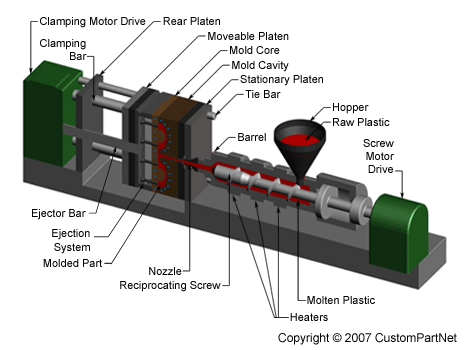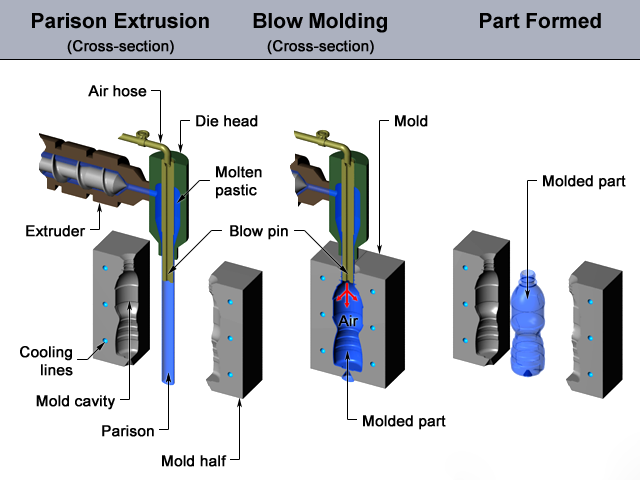Molding (process)
Molding is to track physical objects with the help of liquid, but soon solidifying substances (molding ) or moldable solid materials ( impression). Molding belongs to DIN 8580 manufacturing process to the group of primary forming process.
Use
Molding serves the reproduction of originals, such as in archeology and restoration, for the production of works of art from one primordial form, the model in the art casting, copying from originals in forensics to track backup and in medicine, for example for the production of dental restorations.
Technology
The first impression of the object results in the die, and only if one of these again takes a cast, you get a body that resembles the original ( completely ). The matrix can be represented by cast or impression.
Creation of the form
To create the form, there are very different techniques:
- Can the original be destroyed ( lost mold ) and this is combustible, so they fixed it in a containment field on a cone-shaped piece ( as wood or wax), making up the cast hopper later, it is fixed with strong wires - or waxed cords that later venting channels form - and fill the box with a solidifying mass (plaster, silicone). After curing, the piece glows to allfällig to destroy the original and also funnel and fixation, de-ashed and poured into erwünschtem method.
- Items that shall not be destroyed, you can perform a copy in wax and let lose this.
- In general, however, one prepares multi-part matrices by avoiding undercuts or use a sufficiently elastic molding compound. Put together result in the individual parts of a viable die, if previously taken care of by means of registration marks for accurate and stable fit. In this case, the cast of fine impurities indicates the places where the parts of the die clashed ( Fash ), which are the weaker, the more carefully the matrices were prepared.
- In medicine, the molding process must be physiologically acceptable.
Impression material
Until 1900 they used to casts most common Plaster of Paris (see a plaster cast ), clay, fine sand or triple ( particularly for metal foundry ), glass, sulfur, sealing wax, alum, saltpetre, metal alloys, gutta-percha, wax, shellac, bread crumb, glue and isinglass solution, metal foil, tissue paper and the like. The modern medical technology knows silicones, latex, alginate and polyether enabling flexible impression molds.
Copy and original
When art casting is removed the mold lines and the approach of the casting funnel or makes it available depending on the artistic intent to prevent any possibility of damage or to incorporate the emergence of the work with (factory track) - just for mold making valuable originals to the reproduction from the original to distinguish and record the shaping process. Removing the mold lines here would mean to bring the cast in the vicinity of a fraud.
Examples
In the second half of the 19th century many plaster casts of works of art for museums and individuals were produced. So the Germanic National Museum then had more casts than original sculptures. By no means, however, one may assume that such casts always reflect the original 1:1; so Röding been able to use the Hildesheim choir screen that can happen quite strong deviations if such a complex work can put "better" in the museum context.









